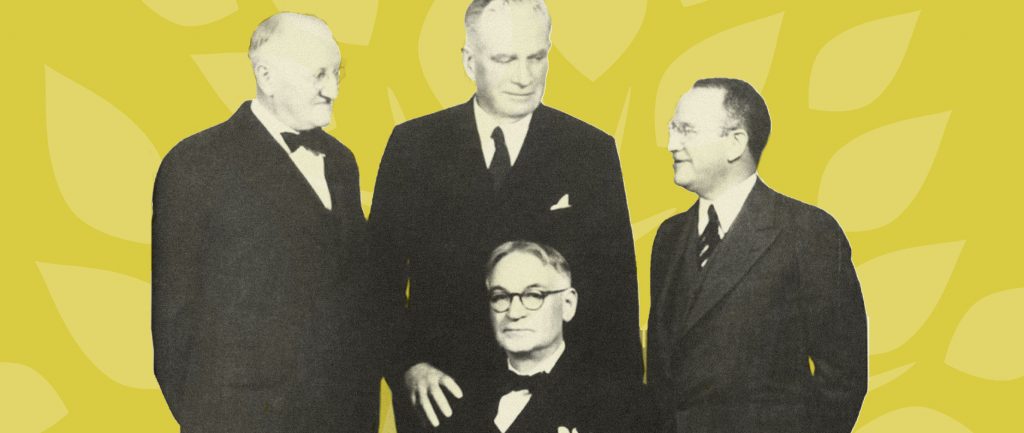
In the year 1921, The Portland Clinic opened its doors to its first patients, and to a rapidly growing and changing city. The Great World War was over, the deadly Spanish flu pandemic was behind us, and the ’20s were beginning to roar. Portlanders, like people all over the country, suddenly found their lives in transition, with exciting innovations signaling the modern world’s rush away from the traditional.
With a population of some 250,000 residents, Portland was now the 24th largest city in the United States, having nearly tripled in the preceding two decades. Women were exercising their newly won right to vote. More than 100,000 vehicles were registered in the city as more and more Portlanders traded their horse-and-buggy rigs for automobiles. The city secured land on Swan Island for an airport in 1921, and the following year, Portland tuned into its first radio stations — soon, air travel and radio would connect Portland with the rest of the country.
Amidst all of these changes, the opening of The Portland Clinic ushered in a major step forward in medical care, as well.
A new idea takes off
In those days, most physicians were generalists who ran solo practices. Oregonians who needed care received it either in their home or the hospital. The Portland Clinic introduced a third option, and a completely new concept, to the region: Oregon’s first multi-discipline medical clinic. Now, for most medical needs, it was no longer necessary to go to the hospital or to wait for a house call. Whatever care you required, it could be provided at the clinic.
It was a concept first advanced halfway across the country by the surgeons Charles and William Mayo. The Mayo brothers began inviting other physicians in a variety of disciplines to join them in their group practice. Soon, the Mayo Clinic revolutionized the idea of cooperative medicine, where clinicians, specialists and laboratory staff all worked together for the good of the patient.
Patients were attracted to this team approach because it allowed the medical staff to investigate their problems thoroughly, in consultation with each other, and to place them in the care of the specialist who was best able to treat them.
Physicians were attracted to it, as well, with scores of them coming to observe and learn from the Mayo Clinic model. One of the first graduates of the Mayo Clinic’s physician training program, Thomas Joyce, M.D., headed west, and soon would become a co-founder of The Portland Clinic.
The group comes together
Since the early 1900s, Portland internist Noble Wiley Jones, M.D., had dreamed of forming a multispecialty group similar to the one pioneered by the Mayo Clinic. He shared the idea with three other physicians — Robert Coffey, M.D., Charles Sears, M.D., and Dr. Joyce. All three embraced the concept, and in 1913, they formed a group and began seeing patients. But their efforts were soon interrupted by the United States’ entry into World War I.
After serving in the war, Drs. Jones and Joyce continued their partnership, and others soon joined them. Dr. Joyce invited internist Laurence Selling, M.D., with whom he had served in the war. Dr. Selling invited otolaryngologist Frank Kistner, M.D., and Dr. Kistner suggested ophthalmologist Joseph McCool, M.D.
In June of 1921, the five physicians began their group practice under the name “Jones, Joyce, Kistner, Selling and McCool.” Dr. McCool withdrew soon after, shortening the lengthy name by one, and the four founders of what would soon be called The Portland Clinic continued on, building the first physician-owned, multi-specialty group practice in Oregon.
In the ultimate vote of confidence, the Mayo brothers started referring their West Coast patients to the new clinic shortly after it opened. A century later, that’s still happening, as the story of advancing medical care continues at The Portland Clinic. See more of our story at theportlandclinic.com/centennial.


